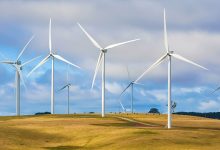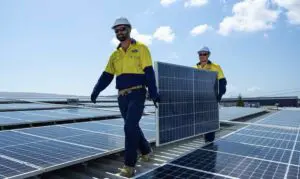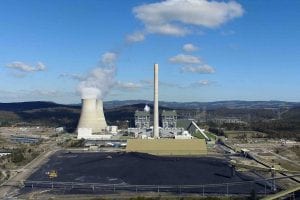A group of 25 wind and solar investors representing more than $25 billion of current and future projects have slammed the Australian Energy Market Commission’s hardline stance on transmission losses, warning it will bring new investment to a halt, raise costs to consumers and put future energy supplies at risk.
A submission from Clean Energy Investors Group – including the likes of UK giant John Laing, Macquarie Group, Neoen, Bay.Wa, FRV, Pacific Hydro, and many others – criticises the AEMC, which sets the market rules, for providing no detailed analysis to support its decision to largely retain the current method of calculating transmission losses, known as “marginal loss factors.”
The CEIG, along with others including the Clean Energy Council, is proposing a different method known as “average loss factors”, which they say represents more fairly what is actually happening on the grid, removes unpredictable volatility, and will lower costs.
It has produced detailed analysis to back up those claims, and insist that it still includes “locational pricing” that will discourage over-investment in certain areas.
Dramatic changes in MLFs – which decide how much of the output of a generator is credited as having “being delivered” – have hit parts of the industry hard in the last two years.
Some projects have had their MLFs downgraded by up to 27 per cent, effectively cutting their revenue by the same amount. In parts of Victoria, NSW and north Queensland, downgrades of 10 per cent or more have been common. Ironically, the latest forecast MLFs show an increase for some projects because new developments have been withdrawn or postponed because of the uncertainty.
The CEIG warns this investment moratorium could continue.
“Retaining the current MLF framework is likely to materially increase the cost of new generation projects, resulting in higher wholesale and ultimately retail prices for consumers … (and)… reduce the volume of appropriately sited, cost effective new renewable energy generation capacity,” CEIG chair Rob Grant writes in the submission.
He says the risk premium applied to equity and debt hurdle rates resulting from ongoing MLF uncertainty for generators saddles these projects with much higher costs; and data from AEMO already points to a 95 per cent drop in new committed projects.
The question about MLFs is one of a number of issues facing the industry at the moment, with more than 1GW of new projects delayed in western Victoria and south-west NSW because of concerns about “system strength”, and the lack of any policy cohesion at the federal level.
In effect, and apart from various state-based schemes, the industry is being left to its own devices, and the lack of proper planning and co-ordination is now starting to bite.
The CEIG says the AEMC’s decision to effectively lock in the current system of MLFs for five years could bring a halt to new investment, just at a time when more generation is needed to replace ageing coal fired generators, and to lower the emissions from the main grid. It warns the contract prices are already rising.
The CEIG is particularly angry that the AEMC has dismissed detailed modelling produced by consultant Baringa Partners and EY, and failed to produce any modelling of its own, apart from what CEIG calls a single “stylised” graph.
“The AEMC’s approach and level of analysis is not commensurate with the importance of the issue under consideration,” the submission says. It disputes the AEMC’s assertion that moving to ALFs will reduce the operational efficiency of the National Electricity Market.
“The AEMC was provided extensive evidence and quantitative analysis throughout the consultation process and stakeholder submissions on the impact of the current MLF framework on investor uncertainty and implications for long term customer electricity costs,” Grant writes.
“These issues are now evident in the market as noted by the approximately 95% year-on-year reduction in new projects considered by the Australian Energy Market Operator (AEMO) in its recent publication of Indicative 2020-21 MLF values.
“There is also increasing anecdotal evidence of higher power purchase agreement (“PPA”) prices in recent months, reversing a 5-year trend of PPA price reductions given the material amount of new generation capacity commitment to the sector.”
The CEIG also accuses the AEMC of making a basic error in its “cost of capital” assumptions. The CEIG says that an added 2 per cent to the weighted average cost of capital as a result of MLF uncertainty would result in an extra $700 million of costs per year to consumers by 2042, based on AEMO’s assumptions under its Integrated System Plan.
“Rather than deferring the MLF issue for another 5-plus years, the CEIG recommends changing to an ALF framework now as the only “no-regrets” short term solution to reduce loss factor volatility, improve investment certainty and restore investor confidence – all of which will keep consumer prices lower than under the existing MLF framework,” Grant writes.
“The AEMC’s decision not to undertake the analysis required to support its conclusions in the Draft Determination while at the same time ignoring or discounting evidence and analysis presented by stakeholders on the merits of a change to an ALF framework raises questions about the robustness and credibility of the consultation process and draft determination.”
The controversy over MLFs has also spilled over to the AEMC’s proposed “COGATI” program. Stakeholder briefings have highlighted overwhelming opposition to the AEMC position.
The AEMC has been widely criticised for being slow to adapt the rules of the market to changing technologies. CEIG chair Rob Grant wrote a piece on LinkedIn last November highlighting how the rules were designed to lock in the legacy investments, rather than facilitate the switch to renewables and distributed generation.
Grant said the MLF rules are typical of that problem. “The MLF rules and methodology are no longer fit for purpose,” he wrote.








